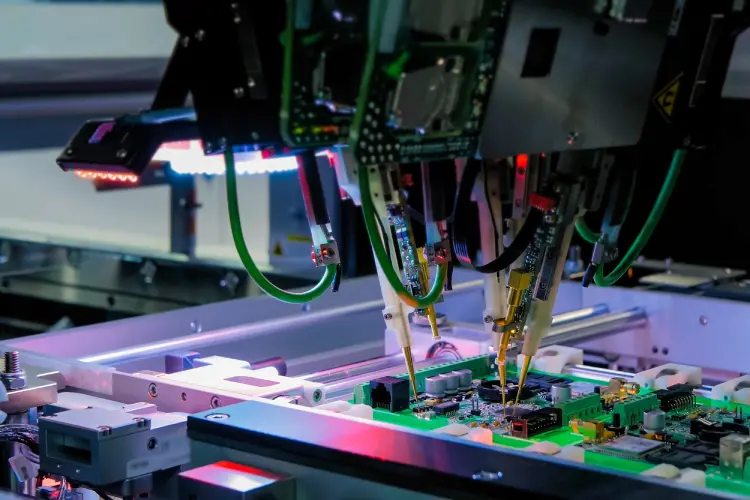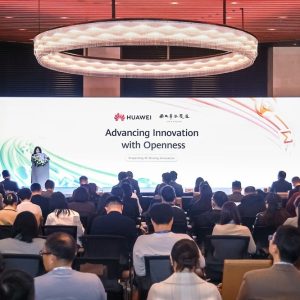
Porsches, PCs and PlayStations are among the products affected by a global shortage of semiconductors that has brought production lines around the world to a halt. Although triggered by Covid-19, the chip shortage has revealed structural weakness in an increasingly fragile supply chain and may foreshadow availability issues for years to come.
The lack of components over recent weeks has been particularly tough for the automotive industry, with GM temporarily closing three plants until the middle of next month, and other manufacturers including Ford, which could see its earnings cut by a third for 2021 as a result of the shortage, and Honda stating that production is slower than usual due to a lack of chips. On Monday, Porsche CEO Oliver Blume told CNBC that he expects his company’s operations to be impacted for months to come.

It’s not just car production that is being held up. Sony has struggled to keep up with the demand for its next-generation PlayStation 5 console, and while Sony Interactive Entertainment president Jim Ryan expects supply to “increase incrementally” throughout the second half of the year, he could not guarantee the company will be able to meet demand next Christmas. Elsewhere, chipmakers AMD and Qualcomm have both publicly admitted to having encountered problems getting hold of components for their chipsets.
What is causing the global chip shortage?
This shortage has been triggered by a dramatic spike in demand, caused by the pandemic. Having declined between 2018 and 2019, global semiconductor sales revenue grew 6.5% in 2020, to $439bn, according to figures from the World Semiconductor Trade Statistics organisation. It is predicted to grow again in 2021, to $469bn.
Given the huge numbers involved, this increase has inevitably put supply chains under pressure. The spike in demand is exacerbated by the industry’s reliance on a small group of foundries, particularly Taiwan’s TSMC and South Korea-based Samsung.
The increased demand follows the growing use of digital technology under lockdown. Demand for PCs rose as companies around the world pivoted to remote working and schools switched to online learning in the wake of the Covid-19 pandemic, while the growth of cloud services meant a higher number of server chips was also required. “The pandemic shifted electronics demand to consumer electronics and hyperscale servers, and 5G came around the corner at the same time,” explains Gaurav Gupta, vice-president for semiconductors and electronics at Gartner.
The reason why carmakers are especially challenged is that cars sales plummeted during lockdown, meaning manufacturers cut their usual semiconductor orders. As a result, Gupta says automotive companies are being deprioritised by over-stretched chip foundries as demand for their products picks up. “Industrial and auto sector demand went down and they cut down their chip orders,” he explains. “Now they can’t get back in the queue. The foundries business model is based on profit margin and volume; automotive electronics is a very small fraction [of their business], so now when demand has picked up and the automotive guys need chips they are not seen as a priority.”
Tensions between the US and China have also played a role in the shortage, Gupta says. “The trade war led to Huawei and its competitors piling up inventory in Q2 and Q3 of 2020 leading to high foundry utilisation,” he says. “Additionally, sanctions on [Chinese chip foundry] SMIC led their customers to look for alternative options, further stressing foundry capacity in Taiwan.”
[Keep up with Tech Monitor: Subscribe to our weekly newsletter]
An end in sight, but bigger problems lie ahead
Shortages are expected to dwindle as demand returns to normal levels and foundries increase capacity. “All the signs are the shortage will be over its worst by the end of the year,” says Mike Orme, thematic research consultant at GlobalData, who specialises in the semiconductor industry.
Orme says the situation has exposed the over-reliance on TSMC and Samsung, particularly for advanced 5nm chips that are used in high-performance systems such as military hardware. “When it comes to leading-edge chips the world is totally dependent on those foundries,” he says. “That’s not music to the ears of the American military or aerospace industry. America only makes about 10% of the chips it uses.”
While Orme is confident supply will be more balanced in the short term, he says the picture for the next few years is less clear. “You don’t hear much talk about it at the moment because people are focused on the current shortage,” he explains. “But if you look ahead another two years, as AI becomes more pervasive and the Internet of Things grows, unless there is a considerable build-out of capacity there could be serious ongoing problems by 2025–27.”
Not only does capacity need to increase, but chip foundries need to evolve so they are can meet the demand for the next generation of semiconductors, Orme believes. “Semiconductor industry infrastructure is not currently fit for purpose for the mid-late 2020s,” he says. “Monolithic chips produced in millions are not the way to go. We are going to see more application-specific chipsets which will involve both integrated circuits and accompanying circuits carrying out more than one function on the same chip.”
Avoiding future chip shortages – is Intel the answer?
If the automotive industry is going to avoid future problems, it may need to look at its own operating model. Gartner’s Gupta says most carmakers currently rely on just-in-time (JIT) processes for semiconductors, which means orders are often made and cancelled at short notice. This is part of the reason foundries have been focusing on other, more reliable, customers during the current crisis, he says.
“This could be a structural problem as over the years with trends like electrification, autonomy and infotainment,” he adds. “Chip requirements for the automotive sector will grow and auto companies will need to revise how they look into their supply chain and consider semiconductors as a more critical part of the bill of materials.”
For the wider sector, diversifying the manufacturing base has been a much-discussed topic. As reported by Tech Monitor, the Semiconductor Industry Association in the US has written a letter, signed by CEOs of many of the biggest vendors, to President Joe Biden to request state aid to boost domestic chip manufacturing. A revitalised Intel, under the stewardship of new CEO Pat Gelsinger, could have a key role to play in the revival. The US firm’s fortunes have fluctuated in recent years, with ongoing supply issues and a failure to keep up with the latest production technologies hitting its market cap, while TSMC has forged ahead.
Intel is what is known as an integrated device manufacturer, unlike Nvidia or AMD which are ‘fabless’ companies that get their designs produced by contractors such as TSMC. “Intel both designs and manufactures chips, but has fallen behind TSMC and Samsung in manufacturing over the last two to three years, it’s only just getting on to 7nm,” Orme says. “The problems have been partly operational because they’ve been run by a finance guy [outgoing CEO Bob Swan, the company’s former CFO].” He says Gelsinger is an “Intel man through and through”, and having played a key role in some of the company’s past successes, is well equipped to close the gap with the Far East manufacturers. “Intel has the widest product range by far and can supply every type of chip needed at the high end,” he says. “It will be front and centre of whatever emerges from the Federal musings about increasing on-shore capacity in the US. It’s already a strong number three in the market to TSMC and Samsung, and I think we’ll soon see it starting to get up to speed.”
Ultimately, Orme says, diversifying the semiconductor manufacturing base is imperative, with so many major industries around the world requiring a reliable supply of chips. “The world depends on these [semiconductors], yet it’s only really got two sources when it comes to the critical chips,” he says. “That’s a problem that needs to be grappled with sooner rather than later.”






